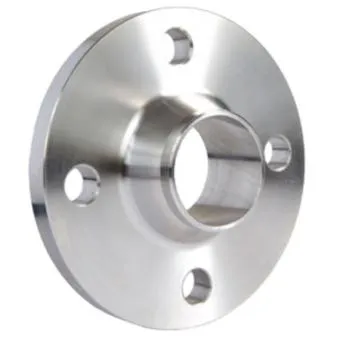-
Cangzhou Yulong Steel Co., Ltd.
-
Phone:
+86 13303177267 -
Email:
admin@ylsteelfittings.com
- English
- Arabic
- Italian
- Spanish
- Portuguese
- German
- kazakh
- Persian
- Greek
- French
- Russian
- Polish
- Thai
- Indonesian
- Vietnamese
- Zulu
- Korean
- Uzbek
- Hindi
- Serbian
- Malay
- Ukrainian
- Gujarati
- Haitian Creole
- hausa
- hawaiian
- Hebrew
- Miao
- Hungarian
- Icelandic
- igbo
- irish
- Japanese
- Javanese
- Kannada
- Khmer
- Rwandese
- Afrikaans
- Albanian
- Amharic
- Armenian
- Azerbaijani
- Basque
- Belarusian
- Bengali
- Bosnian
- Bulgarian
- Catalan
- Cebuano
- China
- China (Taiwan)
- Corsican
- Croatian
- Czech
- Danish
- Esperanto
- Estonian
- Finnish
- Frisian
- Galician
- Georgian
- Kurdish
- Kyrgyz
- Lao
- Latin
- Latvian
- Lithuanian
- Luxembourgish
- Macedonian
- Malgashi
- Malayalam
- Maltese
- Maori
- Marathi
- Mongolian
- Myanmar
- Nepali
- Norwegian
- Norwegian
- Occitan
- Pashto
- Dutch
- Punjabi
- Romanian
- Samoan
- Scottish Gaelic
- Sesotho
- Shona
- Sindhi
- Sinhala
- Slovak
- Slovenian
- Somali
- Sundanese
- Swahili
- Swedish
- Tagalog
- Tajik
- Tamil
- Tatar
- Telugu
- Turkish
- Turkmen
- Urdu
- Uighur
- Welsh
- Bantu
- Yiddish
- Yoruba

Nov . 05, 2024 00:55 Back to list
ansi b16 24
Understanding ANSI B16.24 A Comprehensive Overview
In the realm of industrial piping and fittings, standards play a pivotal role in ensuring reliability, safety, and compatibility. Among these critical standards, ANSI B16.24 stands out as an essential guideline for the design and manufacturing of metallic flanges and their subsequent applications. This article delves into the intricacies of ANSI B16.24, examining its significance, scope, and practical implications within various industries.
What is ANSI B16.24?
ANSI B16.24 is a standard published by the American National Standards Institute (ANSI) under the B16 series, which delineates dimensions, tolerances, materials, and testing methods for metallic flanges designed for use in piping systems. This standard is particularly focused on “Cast Copper Alloy Flanges”, which are widely utilized in various industries, including plumbing, HVAC, and chemical processing. By adhering to ANSI B16.24, manufacturers ensure that their products meet the necessary requirements for strength, durability, and environmental resistance.
Scope of ANSI B16
.24The standard covers multiple aspects of flange design
1. Flange Types ANSI B16.24 outlines several flange designs, including those with raised faces, flat faces, and ring-type joints. Each type serves different applications based on pressure ratings and the types of fluids they will convey.
2. Materials The standard specifies the acceptable materials for manufacturing flanges, primarily focusing on copper and copper alloy compositions. This focus on metal properties ensures high performance in various service conditions, including corrosive atmospheres.
3. Dimensions ANSI B16.24 provides detailed specifications concerning the dimensions of each flange type. These dimensions encompass the diameter, thickness, and bolt hole patterns, which are critical for ensuring compatibility with connecting pipework.
ansi b16 24

4. Pressure Ratings The standard categorizes flanges based on their pressure-temperature ratings, allowing engineers to select appropriate products for specific operational requirements. This aspect is crucial in ensuring that the flanges can withstand the operational pressures of the systems in which they are installed.
5. Testing and Inspection ANSI B16.24 outlines the necessary testing protocols for determining the integrity and performance of flanges. This ensures that they can endure the rigors of industrial applications.
Practical Implications
The implementation of ANSI B16.24 has far-reaching implications for the industries that rely on metallic flanges. Firstly, adherence to this standard assures engineers and project managers that the flanges they are sourcing will perform reliably under specified conditions. This assurance is especially vital in industries where safety is paramount, such as in chemical processing or oil and gas production.
Furthermore, using ANSI B16.24-compliant flanges enhances the compatibility of piping systems. In multi-vendor environments, having a common standard allows for interoperability among different flanges and connections, reducing the risks of leaks and system failures.
Additionally, compliance with ANSI standards can be a requirement for regulatory approvals in various jurisdictions. For industries that are subject to stringent regulations, such as pharmaceuticals and food processing, adherence to ANSI B16.24 can facilitate smoother operations and approvals.
Conclusion
In summary, ANSI B16.24 serves as a cornerstone standard in the manufacturing and use of metallic flanges, particularly in piping systems that demand high reliability and performance. By establishing clear guidelines on materials, dimensions, pressure ratings, and testing protocols, this standard fosters confidence among manufacturers and end-users alike. As industries continue to evolve, the importance of such standards will only increase, ensuring that safety and reliability remain at the forefront of engineering practices. Therefore, understanding and adhering to ANSI B16.24 is not just beneficial—it's imperative for professionals in the field of piping and industrial applications.
Latest news
-
ANSI 150P SS304 SO FLANGE
NewsFeb.14,2025
-
ASTM A333GR6 STEEL PIPE
NewsJan.20,2025
-
ANSI B16.5 WELDING NECK FLANGE
NewsJan.15,2026
-
ANSI B16.5 SLIP-ON FLANGE
NewsApr.19,2024
-
SABS 1123 FLANGE
NewsJan.15,2025
-
DIN86044 PLATE FLANGE
NewsApr.19,2024
-
DIN2527 BLIND FLANGE
NewsApr.12,2024
-
JIS B2311 Butt-Welding Fittings LR/SR 45°/90° /180°Seamless/Weld
NewsApr.23,2024











